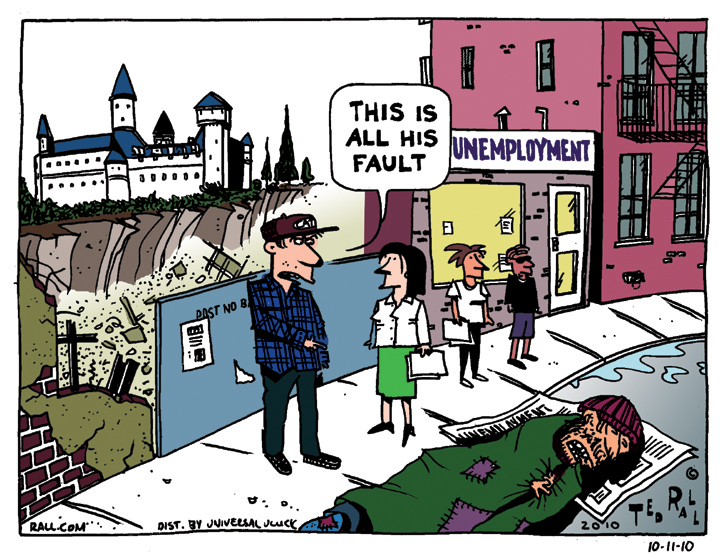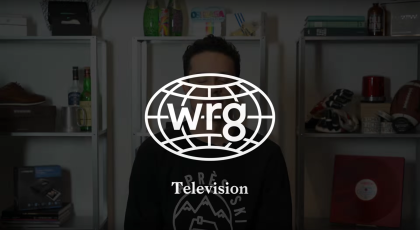
Discredited: Canada’s real problem with debt
Your overstuffed mailbox or perhaps your e-mail bin is undoubtedly occupied by bills you just can’t shake: Canada on the whole shares your pain.
Every major newspaper and every one of Canada’s six major banks has written worryingly about the amount of debt every Canadian has their own personal balance sheets.

The Certified General Accountants Association of Canada, in their June 2011 report, are grim indeed about the situation.
$1.5 trillion was a new record high reached by Canadian household debt in the first quarter of 2011
That’s a stark assessment—no?
Since 1981, Canadian household debt went from just under $5000 in debt in the average Canadian house to $55,000 in 2011—household debt loads have increased ten times over in 30 years.

Now, it is unbearably cliché to say that one’s debt burden is their own fault and a signal of diminished moral character.
Pious business leaders and wooden tongue politicians will try to make this a problem of greedy and lazy slobs who spend with reckless abandon. The problem is more cynical than that; I submit that the true cause of the debt crisis is a crookedly high real interest rate. It’s a problem of the lenders, not the borrowers.
After all, what else is an interest rate but a certifiable index of exploitation? Yes? Yes.

A lot of household debt means a lot of money is being transferred by households into banks. But it is the ‘real rate of interest’ that is of the essence for a banking house.
In 1809, a Bank in Rhode Island had lent $580 million dollars, but because of inflation, it had real gains of only $3 million. It is, for this reason, the founding father of America, Benjamin Franklin, called inflation an informal ‘tax’ on moneylenders. Inflation leads to an unfavourable real rate of interest and bankers fucking hate it.

So in 1992, right around where household indebtedness really soars, the Bank of Canada, infiltrated as it was by desperate financiers who want inflation squelched to revive their incomes, did just that and they killed inflation. The Bank of Canada ratcheted down inflation and kept it for the most part under 2% or right down to 0% after 1992.

What this means is that with inflation less than the interest rate, bankers have secured a real return on interest payments. (Interest rate 2.5% minus inflation rate 0% = real interest rate of 2.5% )
Thus, you get a graph like the one below that financial firms likes to see.

The debt problems of Canadians stem from the intolerably high real interest rate with which borrowers are charged.
The real interest rate, then, might as well be called the rate of household exploitation
So what does this mean that household debt is transferred to banking houses like TD or CIBC?
The Canadian Centre for Policy Alternatives has just released fresh reports on Canada’s income gap. Between the 1950s-60s, the top 1% of income earners controlled 8% of all Canadian wealth. Between 1997-2007, the top 1% has 32% of the wealth.

Why do you think our banking system fared so well during the 2008 world banking panic? Because they have a 3rd of all of Canada’s money! So if you’re in huge debt, don’t blame yourself, it’s the buggers at the Bank of Canada that manage Canadian money to the benefit of 1 per cent. That sounds to me like a banana republic if there ever was one.
Your overstuffed mailbox or perhaps your e-mail bin is undoubtedly occupied by bills you just can’t shake: Canada on the whole shares your pain.
Every major newspaper and every one of Canada’s six major banks has written worryingly about the amount of debt every Canadian has their own personal balance sheets.

The Certified General Accountants Association of Canada, in their June 2011 report, are grim indeed about the situation.
$1.5 trillion was a new record high reached by Canadian household debt in the first quarter of 2011
That’s a stark assessment—no?
Since 1981, Canadian household debt went from just under $5000 in debt in the average Canadian house to $55,000 in 2011—household debt loads have increased ten times over in 30 years.

Now, it is unbearably cliché to say that one’s debt burden is their own fault and a signal of diminished moral character.
Pious business leaders and wooden tongue politicians will try to make this a problem of greedy and lazy slobs who spend with reckless abandon. The problem is more cynical than that; I submit that the true cause of the debt crisis is a crookedly high real interest rate. It's a problem of the lenders, not the borrowers.
After all, what else is an interest rate but a certifiable index of exploitation? Yes? Yes.

A lot of household debt means a lot of money is being transferred by households into banks. But it is the 'real rate of interest' that is of the essence for a banking house.
In 1809, a Bank in Rhode Island had lent $580 million dollars, but because of inflation, it had real gains of only $3 million. It is, for this reason, the founding father of America, Benjamin Franklin, called inflation an informal ‘tax’ on moneylenders. Inflation leads to an unfavourable real rate of interest and bankers fucking hate it.

So in 1992, right around where household indebtedness really soars, the Bank of Canada, infiltrated as it was by desperate financiers who want inflation squelched to revive their incomes, did just that and they killed inflation. The Bank of Canada ratcheted down inflation and kept it for the most part under 2% or right down to 0% after 1992.

What this means is that with inflation less than the interest rate, bankers have secured a real return on interest payments. (Interest rate 2.5% minus inflation rate 0% = real interest rate of 2.5% )
Thus, you get a graph like the one below that financial firms likes to see.

The debt problems of Canadians stem from the intolerably high real interest rate with which borrowers are charged.
The real interest rate, then, might as well be called the rate of household exploitation
So what does this mean that household debt is transferred to banking houses like TD or CIBC?
The Canadian Centre for Policy Alternatives has just released fresh reports on Canada’s income gap. Between the 1950s-60s, the top 1% of income earners controlled 8% of all Canadian wealth. Between 1997-2007, the top 1% has 32% of the wealth.

Why do you think our banking system fared so well during the 2008 world banking panic? Because they have a 3rd of all of Canada's money! So if you're in huge debt, don't blame yourself, it's the buggers at the Bank of Canada that manage Canadian money to the benefit of 1 per cent. That sounds to me like a banana republic if there ever was one.




